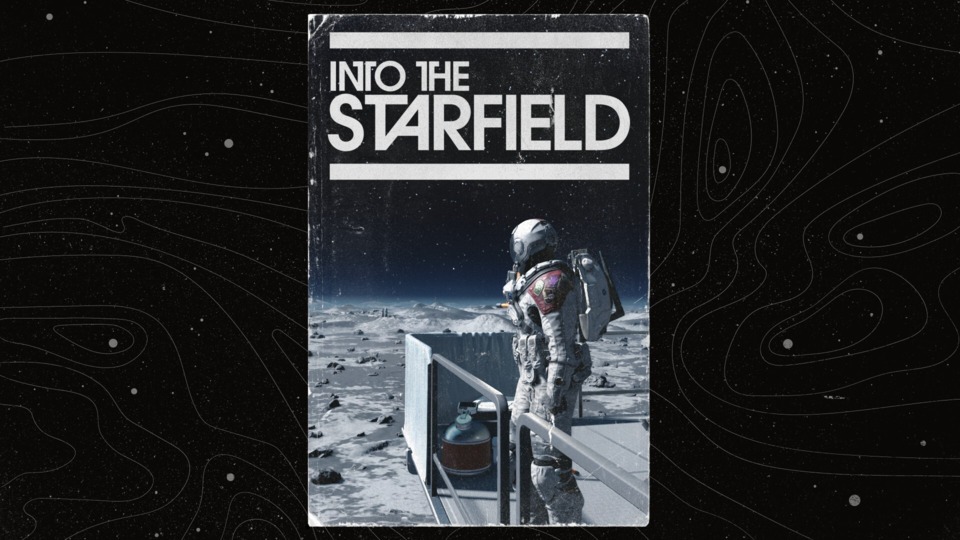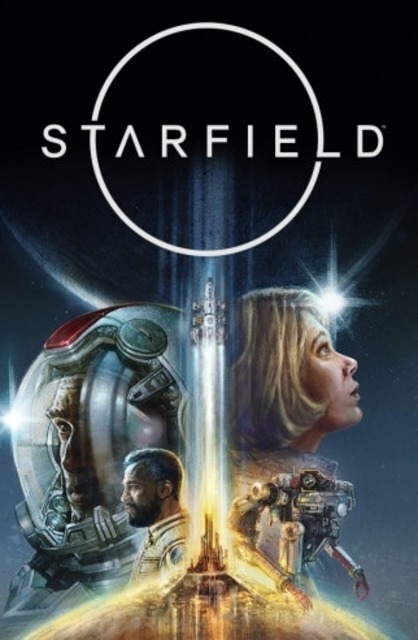Bethesda's format reaches the galactic scale, but it might've been better off staying grounded

After years of exploring fantasy and post-apocalyptic worlds in its Elder Scrolls and Fallout series, Bethesda Game Studios has sought new adventures on a galactic scale with Starfield. And yet what it has found amongst the stars is a more pervasive feeling of limitation than has ever graced their previous titles. Where once a Bethesda game was defined by a potent sense of time and place, of being immersed in a handcrafted world, and of what might be possible, here is a game that feels thinly strung out across too-wide of an expanse, a game defined mostly by what it isn’t.
Starfield eschews that critical contextual backdrop of places like Tamriel and post-nuclear war America for hundreds of planets and moons that offer little of what the studio’s previous games have excelled at, and its attempts to layer on connective tissues of galactic-wide factional strife and mysterious artifact hunting feel disappointingly rote. This is not Bethesda’s best game, not even close, but a Bethesda game it remains through and through. For some—like myself, apparently—the studio’s self-driven, goal-oriented design that is still very much on display here is powerfully alluring, such that I still committed 63 hours of time to chasing after new starships, unlocking skills, progressing through faction storylines, and just generally trying to carve out an existence in this universe much like I do in Elder Scrolls and Fallout. And it was enjoyable, for at least as many hours as I played it, but the cracks and missed opportunities have never been more apparent than they are here.
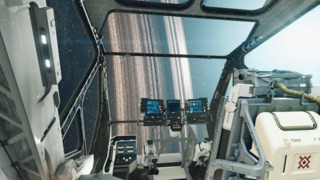
Starfield takes a grounded approach to its sci-fi universe, where the discovery of grav drive technology offers humanity a chance to traverse great distances in space—while also fleeing a dying Earth in the process. The events of Starfield are set in a time when the human population has already colonized and fought wars over numerous worlds, and the settled areas of space are effectively split between two primary factions. The United Colonies is your standard galactic republic/military/police force, based out of the bustling metropolis of New Atlantis. The Freestar Collective is their most direct opposition, a faction that doesn’t want its region of space to come under the tutelage of the UC, and their officials dress and speak like they fell out of a Wild West theater production. The two of them fought wars in the past but are effectively at peace in Starfield. And there are other smaller factions at play, like the Crimson Fleet band of pirates and a technology corporation deeply involved in espionage.
All of these factions vie for the player’s attention—and in typical Bethesda fashion, you can freely join any and all of them all at once—but it’s the explorers’ group Constellation that forms the basis for the game’s high-minded but ultimately underwhelming main storyline. The player is recruited into their ranks within the game’s first hour and sent to collect metallic artifacts that are coalescing into an unknown form back at the group’s home base in New Atlantis.
It takes the story a little while to evolve beyond simple rock collecting. There are some potentially exciting story beats, but these are often let down by the game’s tragically weak writing and lack of cinematic presentation. While this sort of trademark stilted, staring-into-my-soul dialogue system has never bothered me before, it’s difficult not to think of how similar set piece moments were done with more flair in other games. Every nightclub scene in Starfield mostly just made me wish I was playing Mass Effect 2.
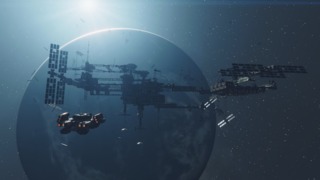
Starfield hints at some deeper roleplaying ambitions in its character creator, which tasks players with choosing a background origin and optionally selecting up to three traits that further define where they come from, what factions they might be biased towards, and a few other quirks. In addition, Starfield sees the welcome return of unique skill-based dialogue options.
And yet in my 63 hours of playing, in which I finished the main storyline, every faction storyline, and a handful of side quests, my background only came up in dialogue on two or three occasions, neither of them impactful. The few times I was granted a skill-based dialogue choice were also inconsequential, essentially allowing me to tell a character that I knew security was important because I had a point in the Security skill. It feels entirely underdeveloped, and by the halfway point of my playthrough I had mostly forgotten who my character was.
It cannot be understated how insufficient Starfield’s writing is. This has long been a shortcoming of Bethesda’s games to varying degrees—people often cite Obsidian Entertainment’s work on Fallout: New Vegas as a particular comparison point for a reason—but it feels especially lamentable here when decent writing and memorable characters have become increasingly common in games big and small.
The shortcomings are numerous. Starfield’s main story touches on big questions about religion and the human spirit but leaves little impression. The faction storylines are better, providing bits of insight into the game’s lore and the history of its people and locations, but they’re often undercut by mission design that has you solving huge problems in seconds with little effort. Dialogue options are usually basic and at worst weirdly childish. At one point I solved an intense diplomatic standoff with one dialogue choice, in which I pointed out something that should have been obvious to everyone in the room, and the key antagonizer immediately changed his mind on the spot. Another encounter, in which I slaughtered my way through a company HQ and confronted its CEO at the top of a tower, ended with an exchange so abrupt and inconclusive I was left bewildered. And there’s something about the way so many of the game’s NPCs greet you with the same inordinately joyful tone that feels strangely pervasive. The cheerful resonance buzzing through the galaxy leads to some bizarre interactions, like a soldier aboard a United Colonies flagship addressing a commanding officer with a casual approach more befitting of office coworkers. Everyone is just kind of the same everywhere you go, even when separated by factional and occupational differences and many hundreds of light years. I would find the game’s optimistic view of humanity amongst the stars inspiring if it didn’t make galactic society feel so flat.
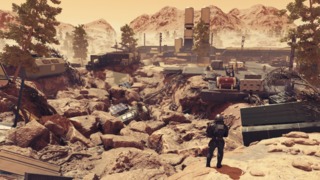
It’s not all bad, of course. The United Colonies faction storyline is excellent and provides some of the most compelling bits of story Starfield has to offer. And I enjoyed the presence of characters like Constellation’s affable wealthy benefactor and of my companion Barrett, whose laid-back appreciation of space exploration was a nice comfort throughout the game.
But what of the game itself? Blessedly, it’s not long before you’re granted your first starship and given the freedom to begin warping to new systems, visiting planets, picking up quests, and fighting lots and lots of space pirates. Along the way you’ll accrue experience points that grant single perk points upon leveling up, which are used to unlock new perks or upgraded versions of perks you already have. The game uses a challenge system for this, whereby every level of a perk has a challenge assigned to it and when you complete the challenge you can unlock the next upgrade. The various skill trees have several tiers of perks that are locked behind spending perk points, so you can’t just grab a perk at the bottom without investing heavily at the top first.
This system ensures that you’re always getting some kind of upgrade or advantage for your character with each level up, but it also means sitting on perk points sometimes because you want to spend them on a perk upgrade but haven’t completed the associated challenge yet. It also means that some upgrades at the bottom tiers that feel rather fundamental, like the ability to take more companions with you on your starship, take an excessively long time to unlock and require investing lots of perks into lower tier abilities you might not actually want.
Combat is commonplace in Starfield, and it feels alright. Bethesda’s combat has never been particularly challenging, and I’ve never enjoyed the harder difficulty modes in the studio’s other releases. So I stuck with Normal here and became wickedly overpowered before long. The game’s lack of enemy scaling also means plenty of encounters with level 1 bandits who disintegrate at the mere sighting of you, which is pretty unsatisfying. Starfield carries over the extensive weapon and suit modding from Fallout 4, but I found myself playing around with this system far less often here.
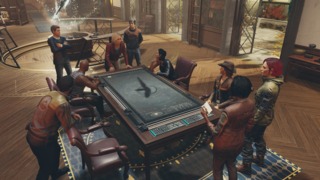
Starfield features hundreds of planets and moons that can be explored, but how interesting you find this will depend on how much you appreciate the often-barren vastness of outer space. These are wide open spaces with resources to collect, plants and animals to scan (but not always!), and research outposts and caves to discover and explore. I enjoyed running around in these areas and feeling cosmically microscopic. It wasn’t long before I started seeing repeat locations, but I still landed on many of these worlds and poked around, eager to see what I might uncover, or even just to spend time wandering and low-gravity-jumping around in a new environment. And some of the game’s more hand-crafted areas are pretty memorable. The Freestar Collective’s home city is a dusty town with muddy streets and wooden buildings begging to be adorned with swinging saloon doors. The planet of Niira features devastated battlefields, where mechanized and biological warfare churched the terrain into cratered carnage. And I enjoyed the obligatory cyberpunk settlement of Neon with its glowing signs and decadence.
Surprisingly, Starfield does not have much of a resource grind. This works to its benefit while also making certain elements feel underbaked. I amassed a huge collection of resources just by going through the game but only ever used them for the occasional weapon and suit mod. You can build resource-generating outposts on any planet or moon with a mechanic similar to what was introduced in Fallout 4, but I cannot imagine what purpose it would serve. There is no resource cost to traveling the galaxy, despite ship’s having a fuel rating, and exploring even the most hostile environments—I’m talking scorching, unsurvivable temperatures and toxic radioactive hellscapes—only poses a minor threat in the form of injuries that can be cured rather easily with readily-available healing items. The game keeps moving along at a steady pace as a result, but no doubt some players will feel that a few mechanics are missing here.
Perhaps Starfield’s biggest let-down is that it largely squanders the feeling of exploration by casting its net so widely and separating everything with fast travel and loading screens. You cannot actually travel the galaxy in Starfield yourself. Every moon, planet, and system must be fast traveled to, throwing to a canned animation or loading screen each time. Flying in orbit above a planet is really just floating in a large skybox in which random encounters with other ships, friendly or hostile, can occur. To be sure, simulating real space travel, or anything closely approximating it, would make for a laborious experience. But something key to the everlasting success of Bethesda’s previous games is lost with this. All of those memorable moments of discovery in Elder Scrolls and Fallout—of stumbling across a witch’s hut in the forest, of emerging onto a tundra and seeing Whiterun standing tall in the distance, of spotting the faraway Tenpenny Tower and feeling a pique of curiosity, of having a dragon suddenly descend from above with fiery fury, of visiting the ruins of a recognizable real world landmark, of reaching a warm and friendly settlement after a day of adventuring in the wilds, whether fantastical or apocalyptic—these moments have no equivalent in Starfield. Every destination is reached at warp speed, robbing players of a journey that might make the experience more worthwhile. Without a stronger narrative or gameplay backing, Starfield’s choppy, disconnected structure feels a bit lackluster.
Why did I play Starfield for over 60 hours? I wanted the best starship in the game. I wanted to see how the faction storylines filled in the lore of Bethesda’s new sci-fi universe. I wanted to level up so I could bring more companions with me on my ship. I wanted to clear out scientific research base #42 and loot it in the process. I wanted to board an enemy ship in space and clear it out from within. I wanted to admire the game’s “NASA-punk” aesthetic, one of its strongest successes. I began to feel increasingly finished with Starfield as I checked off these various goals, but I remain rather fascinated with its scale and how much left remains unseen. What’s out there waiting for me? Is there anything? And how will the wave of mods transform this game? Bethesda’s previous efforts made significantly stronger first impressions, but perhaps in time Starfield will prove just as inescapable.
